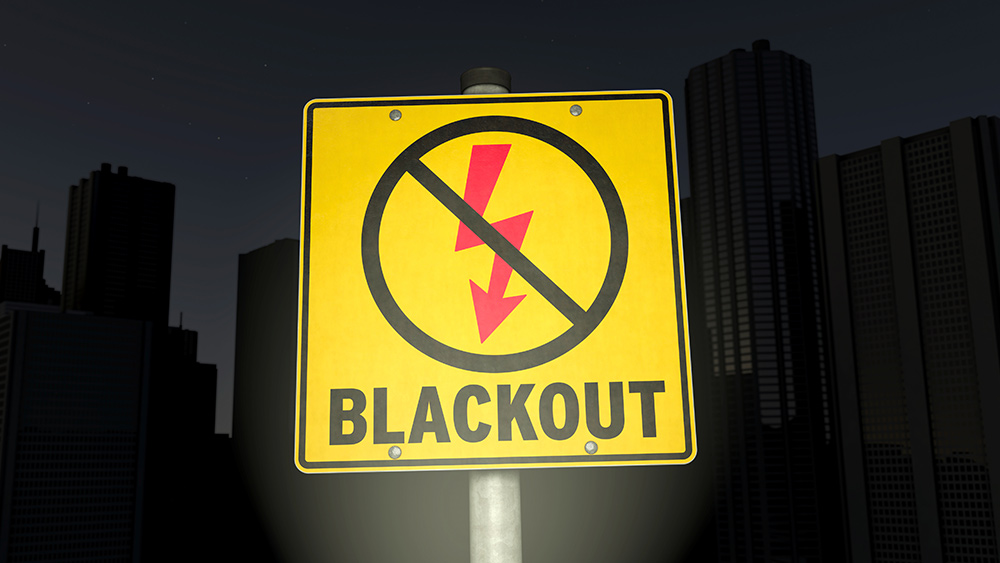 Parler
Parler Gab
Gab
- U.S. Interior Secretary Doug Burgum warns that America could face catastrophic blackouts like Spain’s due to overreliance on intermittent renewables and policies sidelining stable energy sources (coal, nuclear).
- Spain’s April 2024 grid failure, triggered by rapid renewable adoption and coal/nuclear plant closures, caused widespread chaos (stranded commuters, halted flights) and €1.5 billion in losses — highlighting the instability of solar/wind dependence.
- Burgum criticizes federal subsidies for renewables and restrictions on traditional energy, arguing they mirror Spain’s mistakes by prioritizing "green" symbolism over grid reliability and baseload power needs.
- A 2023 NERC report warns of "unprecedented" blackout risks in Texas, the Southeast and New England due to infrastructure underinvestment and overreliance on intermittent energy, worsened by extreme weather.
- While the U.S. pushes renewables, China invests in coal and nuclear, raising national security concerns. Burgum urges pragmatic reforms to avoid Spain’s fate, stressing the need for stability over ideological climate targets.
Spain’s blackout crisis: A harbinger for the U.S.?
Spain’s April 28 grid failure, which trapped commuters in subways, halted flights and disrupted hospitals, began with celebrations just weeks prior. On April 12, the country shut down its final coal plant—a milestone in transitioning to renewable energy. By April 19, officials hailed hitting 100% renewable energy production for a weekday. But within days, solar energy’s inherent instability — coupled with reduced inertia from nuclear and natural gas plants facing closures—caused the grid to falter. Michael Shellenberger, an energy policy analyst, noted that Spain prioritized deploying renewables over maintaining grid stability, leading to a “perfect storm” of physics-defying energy policies. “Solar and wind are intermittent by definition,” Burgum said, likening the Spanish debacle to a potential U.S. crisis. “Grid operators can’t control when the sun shines or the wind blows, so baseload power is essential to prevent failure during lulls.” The outage caused €1.5 billion ($1.6 billion) in economic losses, leaving European leaders scrambling to reassess energy strategies.Renewable subsidies over stability?
Burgum’s critique targets Biden’s federal subsidies and regulatory restrictions on traditional energy, arguing they mirror Spain’s missteps. He accused the administration of gambling energy security on “green” goals without addressing grid vulnerabilities. “Every time a coal plant shuts and a wind farm opens, we’re moving closer to the edge,” he said, while defending the Trump administration’s emphasis on pragmatic energy sourcing. The interview underscores a broader debate over the tension between climate ambition and reliability. States like California and New York have adopted aggressive renewables targets, often paired with closures of nuclear plants—a stable energy source. Burgum called for a return to pragmatic policymaking: “Grid operators need predictability, not idealism. Right now, we’re prioritizing symbolism over safety.”Risks on the horizon
A 2023 report by the North American Electric Reliability Corporation (NERC) flagged “unprecedented risks” of power shortages in Texas, New England and the Southeast, citing underinvestment in infrastructure and over reliance on intermittent energy. These regions, including Texas — the nation’s energy hub — face winter cold spells and summer heatwaves exacerbating grid stress. “It’s not hyperbolic to say blackouts could threaten hospital equipment or force life-saving devices offline,” said a NERC official. Burgum echoed these concerns, linking them to broader geopolitical stakes. “While we’re subsidizing unreliable tech, China is doubling down on nuclear and coal. That’s not just bad for energy — it’s a national security issue.”Security or sustainability?
Secretary Burgum’s warnings reflect a deepening ideological rift over the future of U.S. energy policy. Spain’s blackout underscores the high stakes of real-world grid physics, forcing a reckoning between climate goals and the reality of maintaining power on demand. As winters grow fiercer and solar-dependent grids wobble, the debate will center on who bears responsibility for keeping the lights on: bureaucrats chasing green targets or engineers prioritizing stability. With summer 2025 looming, Burgum’s message is clear: Without practical reforms, America may soon repeat Spain’s mistake. Sources for this article include: ZeroHedge.com Public.news Gulf-Insider.com TasnimNews.comFord initiates massive recall of 273,800 SUVs over braking defect linked to engine interference
By Willow Tohi // Share
Florida lawmakers reject encryption backdoor bill that can be exploited by criminals
By Laura Harris // Share
Chemicals found in everyday plastics DISRUPT sleep cycle and increase health risks
By Ava Grace // Share
Governments continue to obscure COVID-19 vaccine data amid rising concerns over excess deaths
By patricklewis // Share
Tech giant Microsoft backs EXTINCTION with its support of carbon capture programs
By ramontomeydw // Share
Germany to resume arms exports to Israel despite repeated ceasefire violations
By isabelle // Share










